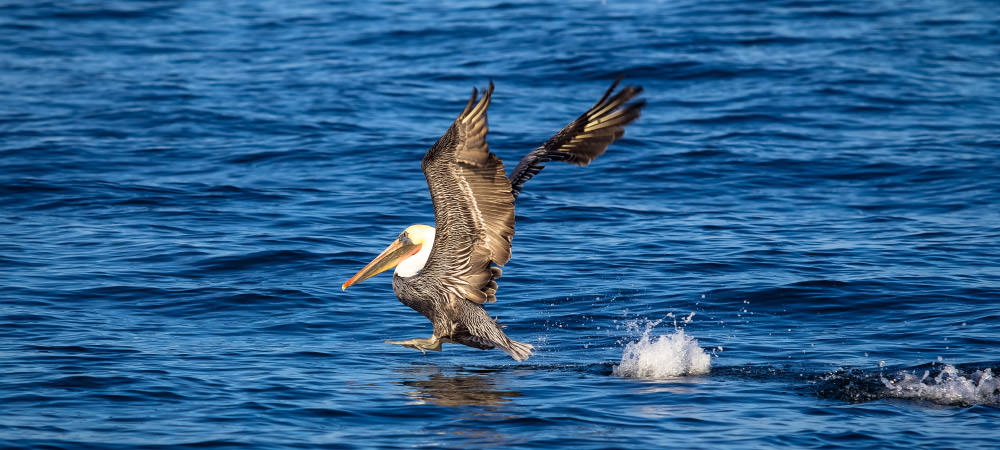Sanctuary Regulations

National Marine Sanctuary regulations are codified in the Code of Federal Regulations (CFR) at Title 15 - Commerce and Foreign Trade, Part 922. These may be accessed on the U.S. Government Printing Office Electronic CFR web site.
Note: regulations covering the Office of National Marine Sanctuaries are codified at Title 15, Subtitle B, Chapter IX, Subchapter B, Part, 922. Subpart A contains regulations of general applicability; Subpart B contains permitting regulations; and there are subparts with regulations for specific national marine sanctuaries. Regulations specifically covering Greater Farallones National Marine Sanctuary are found at Title 15, Subtitle B, Chapter IX, Subchapter B, Part 922, Subpart H; and Subpart M contains regulations specifically covering Monterey Bay National Marine Sanctuary. GFNMS has administrative jurisdiction over the northern portion of Monterey Bay National Marine Sanctuary. This listing only includes regulations established under the federal National Marine Sanctuary Act (NMSA). Other activities may also be regulated within the sanctuary under other local, state or federal authorities and regulations.
Office of National Marine Sanctuaries regulations that are generally applicable to all sanctuary sites are found at Title 15, Subtitle B, Chapter IX, Subchapter B, Part, 922, Subparts A through E. Regulations that specifically apply to Greater Farallones National Marine Sanctuary (GFNMS) are found at Title 15, Subtitle B, Chapter IX, Subchapter B, Part 922, Subpart H. This listing only includes regulations established under the federal National Marine Sanctuary Act (NMSA). Other activities may also be regulated within the sanctuary under other local, state or federal authorities and regulations.
As part of the expansion of the sanctuary in 2015, new regulations were created to help protect and manage the area from Bodega Bay in Sonoma County to Manchester Beach (at Latitude 39 North), a few miles north of the Point Arena Lighthouse in Mendocino County (excluding Arena Cove and all rivers and estuaries), including both state and federal waters. In addition, some modifications were made to the regulations that applied to the pre-expansion area of the sanctuary. Full text of the modified Greater Farallones National Marine Sanctuary final regulations are posted in the Federal Register (Vol. 80, No. 48; March 12, 2015) as the Final Rule (PDF, 318KB), effective Jun. 9, 2015.
Greater Farallones National Marine Sanctuary (GFNMS) accepts permits for Research, Education, Salvage/Recovery Operations and Management purposes.
NOAA Finalizes Rulemaking for Changes in GFNMS and Cordell Bank National Marine Sanctuary (CBNMS) Regulations to Allow Certain U.S. Coast Guard Discharges
NOAA has finalized a rule and an associated final environmental assessment that allows the U.S. Coast Guard (USCG) to carry out otherwise prohibited vessel sewage, graywater and training-related discharges, seaward of approximately 3 nautical miles from shore, within the areas added to Greater Farallones and Cordell Bank national marine sanctuaries' boundaries when they expanded in 2015. NOAA is allowing these exceptions to the discharge prohibitions in order to address USCG concerns that the expansion of GFNMS and CBNMS, with the resulting larger sizes of the sanctuaries and extension of the discharge prohibitions to the expanded portions of the sanctuaries, made it difficult for the USCG to both fulfill its missions and comply with the discharge prohibitions in the expansion areas. Read the Superintendents' statement on this final action.
These regulatory exceptions will enable the USCG to continue surveillance of activities in GFNMS and CBNMS, conduct monitoring and enforcement activities to uphold the National Marine Sanctuaries Act and its implementing regulations; and conduct other USCG mission activities during non-emergency situations that support sanctuary management. This action will also support the USCG in training its personnel to be ready for emergency search and rescue and use of force activities. In formulating the final rule, NOAA considered a number of factors discussed more fully in the final environmental assessment, and various alternatives.
NOAA accepted comments in the first stage of this process between April 21 and May 31, 2016, to gather information to determine the relevant scope of issues and range of alternatives to be addressed in the draft environmental assessment, including electronically; these are posted on the Federal e-Rulemaking Portal. Subsequently, NOAA released a draft rule and draft environmental assessment on November 22, 2017 and held 2 public hearings, on December 5, 2017 at the Bay Model (Sausalito) and December 13, 2017 at the Gualala Community Center (Gualala). NOAA received public comment on a proposed rule and draft environmental assessment for the proposed exceptions from November 22, 2017 to January 16, 2018.
These comments are posted here: https://www.regulations.gov/docket?D=NOAA-NOS-2017-0140
The final rule will become effective 30 days after its publication in the Federal Register.

